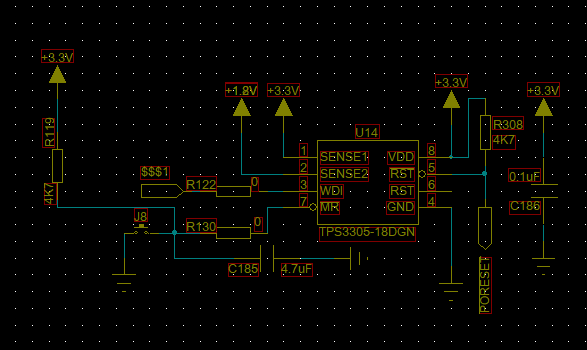As you see above ,Now I have a problem。 When I press the reset button, the tps3305-18 output does not respond. What could be the cause of this problem? I measure The power quality of 3.3V and 1.8V are all very good。 And the WDI input is High resistance state。
-
Ask a related question
What is a related question?A related question is a question created from another question. When the related question is created, it will be automatically linked to the original question.


